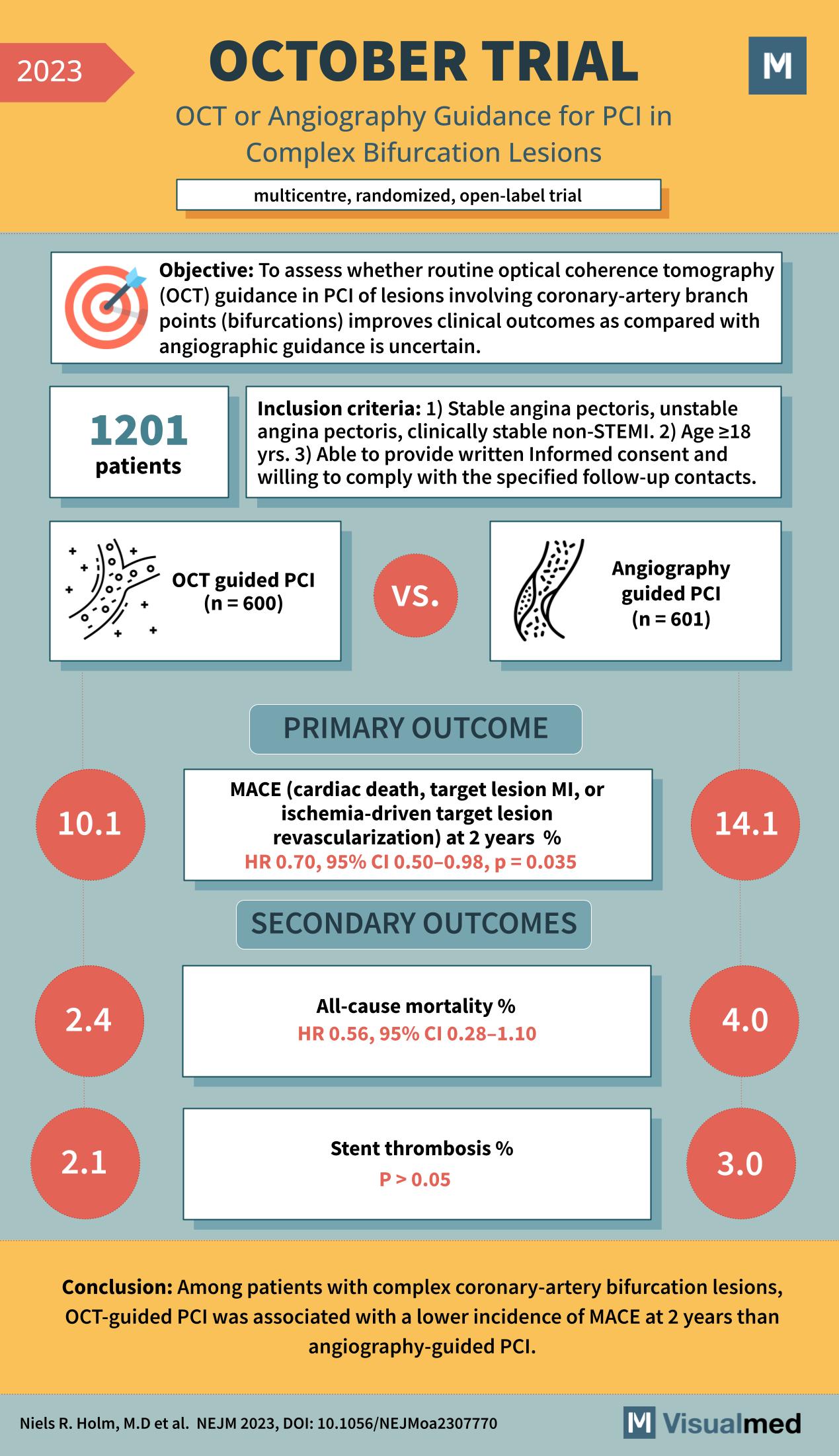
The OCTOBER trial, detailed in the New England Journal of Medicine in 2023, was a multicenter, randomized, open-label trial designed to assess the effectiveness of optical coherence tomography (OCT) in guiding percutaneous coronary intervention (PCI) for the treatment of complex coronary-artery bifurcation lesions.
A total of 1,201 patients were included in the study. They were randomized into two groups: OCT-guided PCI (n=600) and angiography-guided PCI (n=601), with the objective of determining if the use of OCT could improve clinical outcomes over traditional angiographic guidance.
The primary outcome measured was the rate of major adverse cardiac events (MACE), defined as cardiac death, target lesion myocardial infarction (MI), or ischemia-driven target lesion revascularization at 2 years. The OCT-guided PCI group had a MACE rate of 10.1%, which was significantly lower than the 14.1% observed in the angiography-guided PCI group, with a hazard ratio (HR) of 0.70 (95% CI, 0.50–0.98; p=0.035), suggesting a beneficial effect of OCT guidance.
Secondary outcomes of the trial included all-cause mortality and stent thrombosis percentages. The OCT-guided PCI group saw a lower rate of all-cause mortality (2.4%) compared to the angiography group (4.0%), though the confidence interval was wide and the result was not statistically significant (HR 0.56; 95% CI, 0.28–1.10). As for stent thrombosis, both groups had low rates of 2.1% and 3.0%, respectively, with no significant difference (p > 0.05).
The conclusion of the OCTOBER trial was that among patients with complex coronary-artery bifurcation lesions, OCT-guided PCI was associated with a lower incidence of MACE at 2 years compared to angiography-guided PCI. This suggests that OCT may provide a more precise approach to PCI in complex coronary cases, potentially leading to better patient outcomes. The trial supports the consideration of OCT as a beneficial tool in interventional cardiology for patients with complicated coronary artery disease.